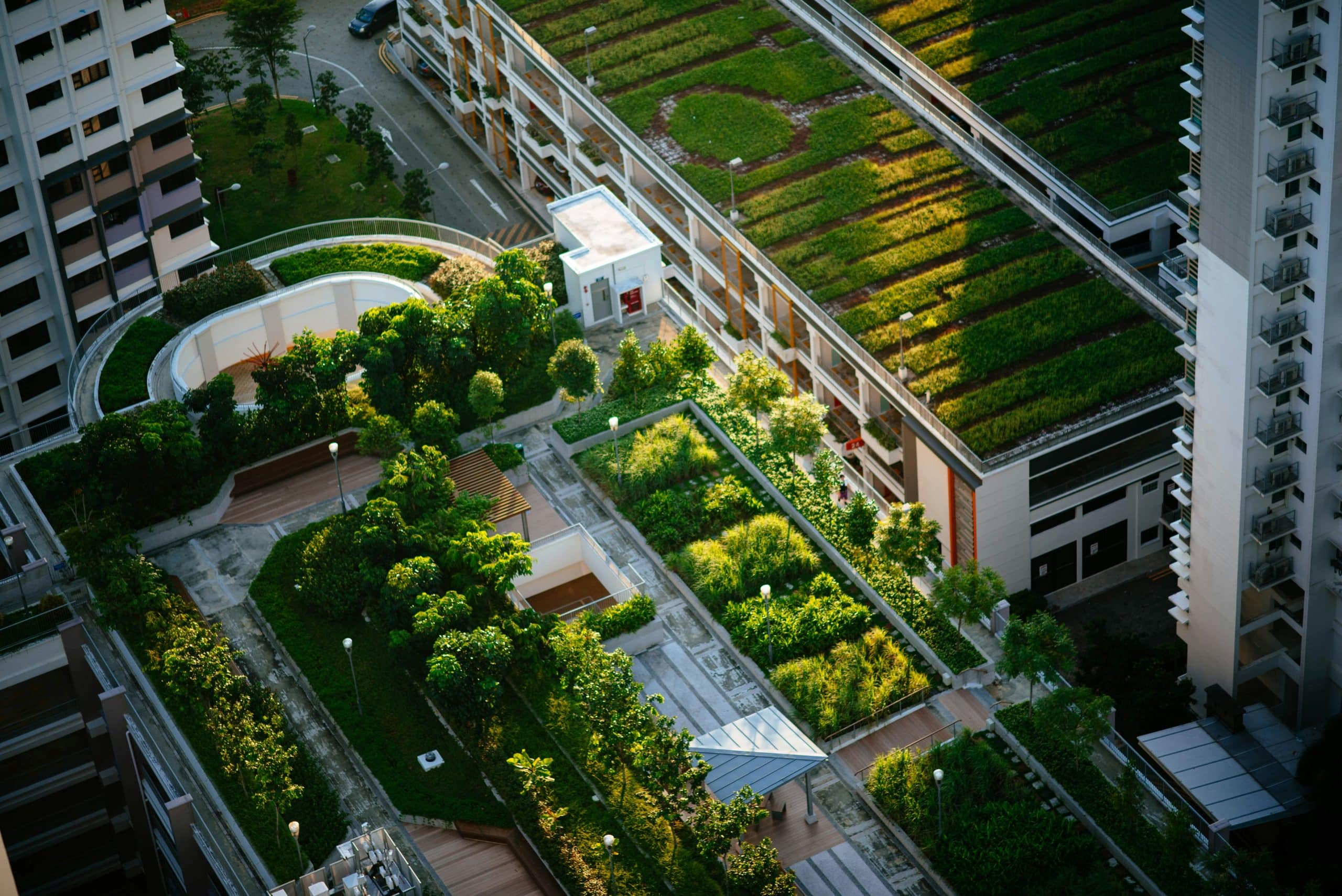As an increasing number of people are moving into cities, the demand for sustainable solutions to urban planning challenges is on the rise. One such solution is the incorporation of green infrastructure in urban planning, which helps to bolster resilience and aid in disaster recovery. This article will explore the concept of green infrastructure, its benefits to urban resilience and communities, and its role in climate change adaptation and risk reduction.
Green Infrastructure: A Natural Approach to Urban Planning
Green infrastructure refers to the strategic network of green spaces that deliver a wide range of environmental, economic, and social benefits. These can include parks, woodlands, wetlands, green roofs, and gardens, among others. These natural systems and features can bring about a multitude of benefits to urban areas, from reducing flooding risk to improving air quality and increasing biodiversity.
Lire également : The benefits of Hula Hoop for physical and mental health
Green infrastructure caters to multiple benefits, both for the environment and for the community at large. It promotes ecosystem services – the benefits that people obtain from ecosystems – such as clean air and water, climate regulation, and opportunities for recreation and cultural development.
Furthermore, green infrastructure integrates environmental considerations into urban planning. It presents a holistic and cost-effective approach to managing urban growth and development, considering the intricate linkages between land, water, air, and living organisms.
A lire aussi : How can AI-driven chatbots provide mental health support in crisis intervention?
Urban Resilience and the Role of Green Infrastructure
The term ‘urban resilience’ refers to the ability of an urban system to maintain its functions and structure in the face of shocks and stresses. This can include natural disasters, climate change, economic downturns, and other major disruptions.
Green infrastructure contributes to urban resilience in numerous ways. Firstly, it can mitigate the impacts of natural disasters such as flooding. For instance, green spaces like parks and wetlands can absorb rainwater, reducing the chance of floods. Additionally, vegetation can act as a natural barrier against storm surges and high winds, protecting communities from their impacts.
Secondly, green infrastructure can help cities adapt to climate change. As climate patterns shift, cities may face new challenges such as increased temperatures and changing rainfall patterns. Green spaces can help regulate the urban climate, reducing heat stress and providing shade.
Green Infrastructure for Community Development
In addition to environmental benefits, green infrastructure also plays a crucial role in community development. It provides recreational spaces, encourages social interaction, and improves mental health, contributing to the overall wellbeing of the community.
Moreover, green infrastructure has the potential to create job opportunities. The planning, installation, and maintenance of these natural elements can spur local employment and stimulate economic growth. Furthermore, green infrastructure can enhance the aesthetic appeal of an area, potentially increasing property values.
Planning for Disaster Risk Reduction with Green Infrastructure
The importance of green infrastructure in disaster risk reduction cannot be overstated. It plays an integral role in reducing vulnerability to disasters and promoting sustainable urban development.
Green infrastructure can reduce the risk of disasters by mitigating the impact of extreme weather events. For instance, green roofs and walls can absorb rainwater, reducing runoff and the risk of urban flooding. At the same time, these features can regulate urban temperatures, reducing the risk of heatwaves.
Moreover, green infrastructure can improve the resilience of the urban ecosystem. By promoting biodiversity and improving the health of the ecosystem, it can increase the system’s ability to recover from disturbances, whether natural or man-made.
Evidences from the Scholarly Community
Numerous studies support the benefits of green infrastructure for urban resilience. According to a report on Google Scholar, cities that incorporate green infrastructure into their planning strategies are more resilient to climate change and are better equipped to recover from disasters.
A crossref report also found that green infrastructure is a cost-effective solution for disaster risk reduction. The natural systems not only provide environmental benefits but also serve economic and social purposes, proving that they are a valuable asset for sustainable urban development.
The scholarly community continues to advocate for green infrastructure as an integral part of urban planning. By integrating these natural systems into our cities, we can promote resilience and sustainability, while also enhancing the quality of life for urban communities.
Green Infrastructure and Decision Making: A Path Towards Sustainable Development
Incorporating green infrastructure into decision-making is a path towards sustainable development. It provides a practical and effective approach in proactively addressing the challenges of urbanization, climate change, and disaster risk reduction.
Firstly, green infrastructure emphasizes the need for nature-based solutions in urban planning. These solutions, such as the creation of green spaces, use of rain gardens, and promotion of urban green, utilize natural systems and processes for the benefit of both people and the environment. For instance, planting trees and vegetation not only improves air quality but also provides shade and reduces urban heat island effect.
Secondly, green infrastructure promotes the concept of ecosystem-based management. This holistic approach considers the interactions between different components of the urban ecosystem, ensuring that decisions made today do not compromise the sustainability and resilience of urban areas in the future.
Moreover, green infrastructure can guide decision-making towards prioritizing investments that are beneficial in the long-term. It may require significant upfront costs but it can provide substantial savings in the long run by reducing the costs associated with disaster recovery and climate change adaptation.
Finally, green infrastructure can foster participatory decision-making, involving local communities in the planning and management of their urban environment. This approach not only ensures that the benefits of green infrastructure are equitably distributed but also increases public awareness and appreciation of the value of nature in urban areas.
Green Infrastructure in Practice: International Initiatives and Examples
Many international initiatives and examples illustrate the successful implementation of green infrastructure in urban areas. For instance, in the United States, the city of Philadelphia has been recognized for its Green City, Clean Waters program. This initiative prioritizes green infrastructure solutions such as rain gardens, green roofs, and porous pavements to manage stormwater and reduce flooding.
Meanwhile, in Europe, the city of Copenhagen has adopted the Cloudburst Management Plan which includes a network of green and blue spaces designed to channel rainwater away from vulnerable areas during heavy rainfall events.
Furthermore, the United Nations’ Sustainable Development Goals underline the importance of green infrastructure in achieving sustainable cities and communities (Goal 11) and in taking action to combat climate change and its impacts (Goal 13).
These examples demonstrate that green infrastructure is not just a concept but a practical strategy for enhancing urban resilience and sustainability. They provide valuable lessons for other cities around the world that are aiming to navigate the challenges of urbanization, climate change, and disaster risk reduction.
Conclusion
In conclusion, green infrastructure plays a pivotal role in enhancing disaster resilience and recovery in urban areas. It provides multiple benefits – from reducing flooding risks to improving air quality and biodiversity, and from fostering community development to reducing disaster risks.
The scholarly community, including renowned platforms like Google Scholar, underscores the importance of green infrastructure in urban planning. As cities grapple with the realities of climate change and natural disasters, green infrastructure offers a nature-based solution that not only mitigates environmental impacts but also promotes sustainable development and urban resilience.
The incorporation of green infrastructure in urban planning is not a choice but a necessity. Diverse stakeholders, from urban planners to policymakers, and from local communities to international organizations like the United Nations, must collaborate to ensure the successful implementation of green infrastructure in our cities. The future of sustainable urban living depends on our collective commitment to adopt and advance green infrastructure in urban planning.






